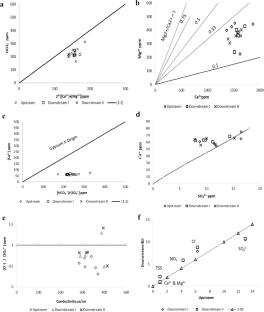This work focuses on the characterization of a typical coastal karst watershed by addressing its physico-chemical parameters. The concentrations of the main ions clearly indicate the dominance of Ca2+ and HCO3− with a carbonate weathering rate equivalent to 230t/Km2/year; that is a typical weathering of karst watersheds. The spatio-temporal variability of dissolved organic matter (DOM) is also assessed in the watershed. Many samples were collected under different hydrological conditions from three representative sites. The evolution of OM composition along an urbanization gradient from upstream to downstream Kadisha watershed reveals the very strong impact of urban discharges on the receiving waters. Substantial differences in DOC results are highlighted in relation to the urban or natural origin of the DOM. Upstream OM flux is quantified and compared to downstream OM flux showing that, during the low flow period, the downstream flux is 29 times higher than the upstream. Also, a large fraction of non-humic substances, including hydrophilic organic matter HPI, is detected in the downstream section impacted by urban discharges. The higher values of SUVA noticed for DOM at upstream compared to downstream, reflects the low aromaticity and non-humic character of DOM in downstream. These outcomes show the impact of the Tripoli urban discharges on the quality and quantity of OM in the receiving waters downstream of the Kadisha catchment. This is typical at low water period when the dilution factor of urban discharges in the receiving waters is the least.



